Almost a hundred years ago, Selitra produced a furyor in agriculture as feeding for plants. The fertilizer used today has a number of distinctive advantages.
Not so long ago, the Selith was forbidden to use for private purposes and was allowed only for fertilizing collective farm fields. Some still consider it a harmful tool, although its negative factor is only explosion hazard. However, in spite of everything, the nitrate is widely applied to gardeners and is considered one of the most efficient and therefore popular types of fertilizer.
The nitrogen-contained nitrogen allows you to positively affect the growth of the vegetative mass of different cultures. Also, fertilizer increases the protein mass of the majority of plants, which significantly improves the quality of the crop. A gluten mass, which is formed during its use, makes it possible to increase the quantitative indicators of production of plant crops.
Fertilizer specification
Any fertilizers are divided into two basic types:
- Inorganic - bird litter, peat, humus, manure and more.
- Organic - nitrates, phosphates, agriculture and others.
Any fertilizer enhances the growth of cultures, which means that increases its high-yielding. Even with the lessons of biology, it should be remembered that the Earth, if it is for a long time to grow something, is depleted. Therefore, periodically it is necessary to feed it both by organic and inorganic substances.
For harvesting, the land should contain the required number of different chemical trace elements:
- nitrogen is the main useful component, indispensable for the full formation of any culture, which in turn increases high-yielding;
- phosphorus is needed for the implementation of photosynthesis, reducing the crop aging period;
- potassium activates synthetic reactions in culture and affects the harvest quality.
Nitrate as a fertilizer
Most amateur gardeners feed their trees, bushes, flower beds and other green plantings in their domestic gardens and gardens with various substances. Thus, trying to increase not only the growth rate, but the quality and amount of products. The most demanded today among them is ammonia Selith.
In everyday life, it happens two types of origin:
- Natural is removed from natural underground pantry (sodium and potassium agriculture), which is formed in the disintegration of organic substances and is used as fertilizer.
- Chemical - extracted by a chemical method (ammonium, barium, potash, calcium, sodium), which is used for the manufacture of black powder, pyrotechnic compositions and explosives.
Ammonium nitrate
Varieties of nitrate ammonia
The ammonia nitrate is a fertilizer, which refers to the class of mineral products extracted as a result of the neutralization of nitric acid ammonia. Fertilizer is a white lumps with a size of 1 to 4 mm. Such a substance is very often produced with the addition of different trace elements necessary in order to adapt to the need of agriculture of different climatic zones.
There are several types of such fertilizer:
- Ammonium brand "b". There are two varieties that are used and stored at home. Used for indoor plants and fertilizer seedlings.
- Ammonia simple. One of the first developed varieties, the main task of which lies in creating cultures of concentrated providing nitrogen. The use of nitrate ammonium acquitted its ideal performance as a source fertilizer for many grown plants, which replaces the carbamide (urea).
- Lime or Norwegian. There are simple and granular views containing calcium, magnesium and potassium. High strength granules are stored longer and transported by in any way due to the smallest explosiveness. Granules are processed by fuel oil, but used almost for all crops and do not increase the acidity of the soil, which allows it to be good.
- Potash Selith or Indian. It accommodates only a few useful cultures of the components are nitrogen and potassium. The potassium agriculture is the most appropriate substance during the period of bootonization, flowering and planting of fruits, as well as for fruit trees and vegetables by improving taste.
- Calcium Selith. This type of fertilizer is produced in a dry granular form and a liquid solution. It is used as a separate subjectable to increase calcium content in the ground. During feeding Calcium Selutyra, the plants absorb calcium and give high yield indicators, and also increases the shelf life of such products. The lack of calcium in cultures leads to the braking of the development of their root system, when the rhizomes are rotated, and the growth of the stem stops.
- Magnesium. It is used as an additional magnesium source for vegetables and legumes.
- Sodium Selith or the second name "Chilean Selith". In the production of potash Selitra, she found a separate consumption. It is used both the main substance and for the feeding of any cultures on all types of land. It is used in the food industry for meat processing.
- Porous. It is not a fertilizer and is used for explosives, so it is a danger to agriculture.
Ammonium Selitra Application Areas
Nowadays, Selitra applies in the following areas:
- Woodworking industry. Fertilizers abundantly feed the soil with useful trace elements and protect plants from destructive diseases, accelerate their growth and increase wood quality.
- Agriculture. Ammonium nitrate finds use as a fertilizer for any cultures and in all cases of dust: both mainly soldered and as feeding. In addition to applying as feeding, Selith has beneficial properties that protect against plant diseases. This is an important factor with increased use of land, as well as annual cultivation of the same crops on one territory, which generates the separation of fungal diseases in the surface layers of the Earth. Granulated nitrate is used both in the production of complex mineral fertilizers and folk economy.
- Mechanical engineering. An important discovery was detected when using a carbamide in the production of a solution, which is used to purify exhaust gases of diesel engines.
- Furniture industry. In the manufacture of viscose fiber, ammonium sulphate is used. A small amount of substance is used for the release of melamine (synthetic material, which is called artificial veneer).
- Medicine. It is applied to the needs of pharmaceutics. Urea in purified form is used to prevent and reduce brain edema as a dehydration method.
- Oil and gas industry. The nitrate is used as one of the components included in the collection of gelling springs when creating petroleum fields. The gel consists of liquid glass, nitrate ammonia, surfactant and fresh water. This invention is used in the improvement of reservoir oil recovery.
- Food industry. Finds the use of the selection and on the meat-plants when cooking smoked. It is a preservative, which allows for a long time to preserve the cooked product and allows the meat product to save natural and appetizing color. Of course, the smelter should be food, with a high degree of cleansing and compliance with the correct dosage.
- Production of explosives. This industry ranks second for farming. Ammonium-saltryed explosives make up the largest grouping, as they prevail in the undermining of soils. Mainly applied by the national economy, and less - in military affairs.
- Construction. Fibrous plates are used in construction and furniture manufacturing.
- Chemical industry. Used in the compound of carbamide-formaldehyde resins. An interesting use of Selitra was also found when cleansing splashing CHP and incineration plants.
When and how to make a salter?
At what time of the year it is desirable to feed the culture of ammonia Selitra?
- From the earliest spring to the middle of the summer, its primary enhancing is assumed, i.e. When the ripening of the Botvinnik of vegetable plants begins. In the next part of the summer, it is not recommended to enter an ammonium salter, because the growth of the trunk and leaves can slow down the creation and formation of fruits. Mineral fertilizers are recorded in the ground to a certain depth of robbles (10-12 cm), but since the smelter is well soluble in water, it is also entered in solution.
- The seedling landing is accompanied by the addition of 3-5 g of ammonium nitrate to the temporal meter or 2-3 g into each well. If the Selitra is translated into the solution, then it will take 30-40 g per 10 liters of water. And the same solution can be requested a culture during the active life of plant organisms.
- When disembarking roots in the ground, 25-30 g of ammonium nitrate per square meter of land is entered into the ground. Norma can be increased if the Earth has not previously been processed to 50 g.
- For garden plantings, the volume of the introduced nitrate ammonium is 13-18 g per square meter. You need to make a circle of display of shrub or wood foliage.
- In a solution of ammonium nitrate, garden trees are fed at a rate of 23-28 g per 10 liters of water. This feeder is spent seven days after flowering. The second feeder is carried out in 28-35 days.
- After feeding, all the plantations must be abundantly pouring so that there is no root burn.
Approximate fertilizer consumption standards:
- Roots. From 5 to 7 g per square. m. Apply 2 times - before flowering and after the fetus turns.
- Vegetables. From 5 to 10 g per square. m. Granules fall asleep in the earthy deepening one-time three weeks after surgery.
- Fruit trees. From 15 to 20 g per square. m. Dry fertilizer is used by one-time during the appearance of leaves, and dissolved a couple of times under the root.
Contraindications for use:
- Fertilizer should not be mixed with chalk, lime, dolomite, manure, phosphates, peat, sawdust, straw and any organic substances, since when the reaction occurs, it may turn around.
- It is forbidden to bring a salter for cucumbers, patissons, zucchini and pumpkin, since in these cultures an increased accumulation of nitrates is provoked.
- In case of random falling fertilizer into such cultures, the soil must be abundantly pouring.
Production and storage SELITRA
Production of Selitra Ammoniac
The release of nitrate ammonia fires and is explosive and consists of several main stages:
- the weakening of nitric acid ammonia;
- condensation of the ammonium nitrate solution;
- granulation alloy ammonium nitrate;
- heating and dispersion of granules;
- pollination of the commodity product;
- package.
The entire technological process must be implemented strictly according to the established rules. Safety and fire guidelines should be clearly observed. Fertilizer prepared for use is packaged in hermetic material and delivered to the warehouse for further distribution.
At today's enterprises, quality control has been created, which makes it possible to produce fertilizers with excellent technical characteristics at the lowest costs. Prior to the start of the technological procedure, the raw material is a thorough check. In addition, the production of nitrates is carried out without loss, because heat allocated in the process is sent to heating the drying boxes.
All production equipment is equipped with special security control sensors. In production, enhanced observation and protection behind the warehouse room are carried out. Thus, the mechanical and independent security mode provides guaranteed preservation of employees from unforeseen disasters.
Storage Selitra
Selith is easily soluble in water, and therefore quickly absorbs moisture. In order to maintain its positive qualities, it is necessary to comply with special requirements, and otherwise it will change properties and will not be applicable to enter the ground. Therefore, specific moisture absolressors are mixed in packing with ansticity to prevent its early liquefaction.
Moisture absorbs absorb moisture, and the substance retains its qualities. The used tools are harmless to earth, crop, and the health of humanity - they perform the appointment of an unusual absorbing sponge, hitting in the soil and performing their goal, simply mixed with the ground. In defense against dampness, elements of exclusively natural origin are used - this is a crushed shell.
Ammonia Selitra can not be stored on open or wet warehouses or under sheds. In warehouses, where it is located, it is impossible to smoke and apply light with an open source of flame. The wiring must also be qualitatively and reliably exhibited.
In close proximity, there should be no materials that are reacted with ammonia associate (acid, wood, coal, wood sawdust, oil, straw, metal oxides, lubricants). In a warehouse for storing fertilizers, up to 300 tons of saltpeters can be located. Standard packaging accommodates weight up to 50 kg, the storage of which is allowed on the flame retardant in the stacks of no more than 12 layers.
The distance to the warehouse walls is about 0.2 m and to the source of heat - 1.5 m. The main risk factors can be heating up to 30 degrees, the effect of water and precipitation or packaging damage. Transportation of a specially packaged nitrate is possible by any kind of transport, except aviation.
Selith is a simple mineral fertilizer that can be bought without prejudice to the wallet. You can buy it in any form, which is delivered by packages or for weight by road, rail and water transport. Ammonium nitrate takes more than half of the fertilizer market, but, nevertheless, the demand for this kind of fertilizer is still growing, and, therefore, the production of ammonium nitrate increases, and the price will not change much.
Selitra Fertilizer Video Lesson
Expert advice on feeding garden plants:

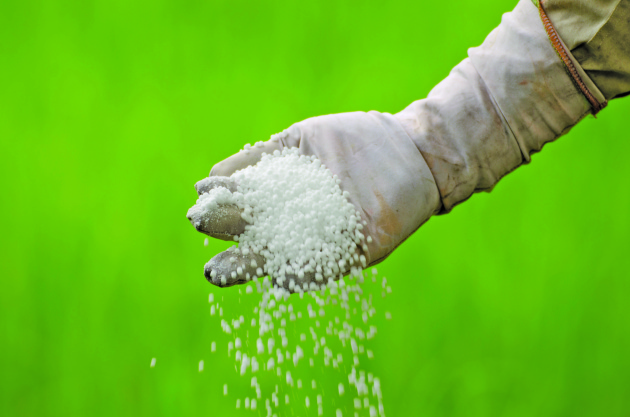

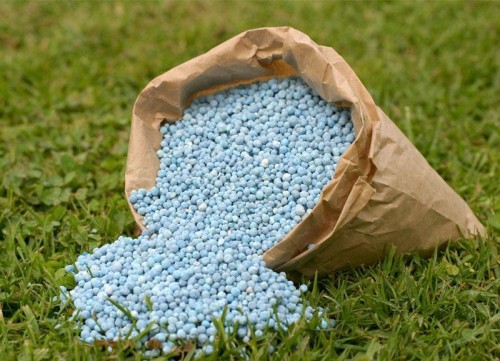


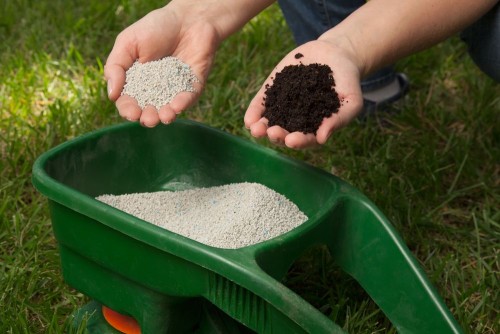
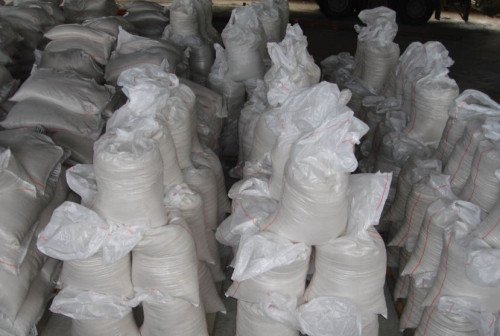
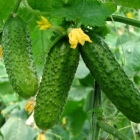
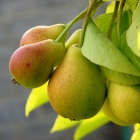
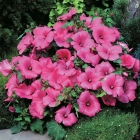
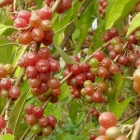
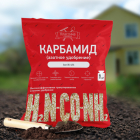
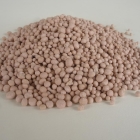
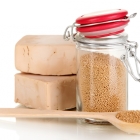

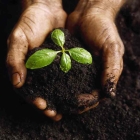
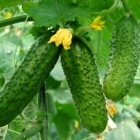
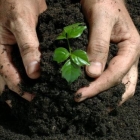
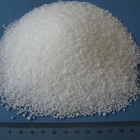
 Start a discussion ...
Start a discussion ...